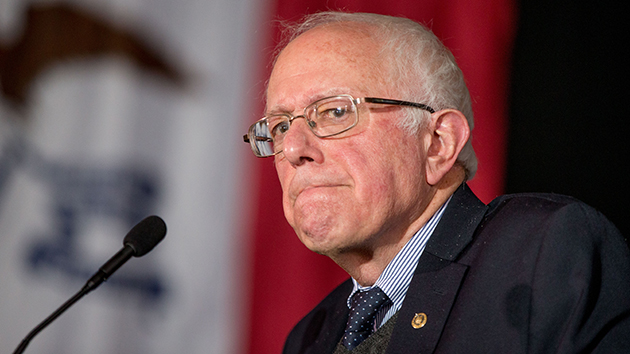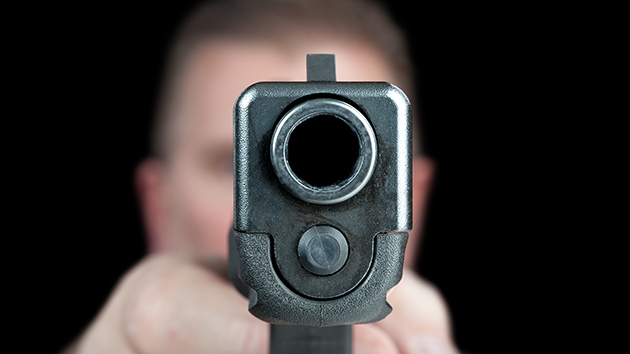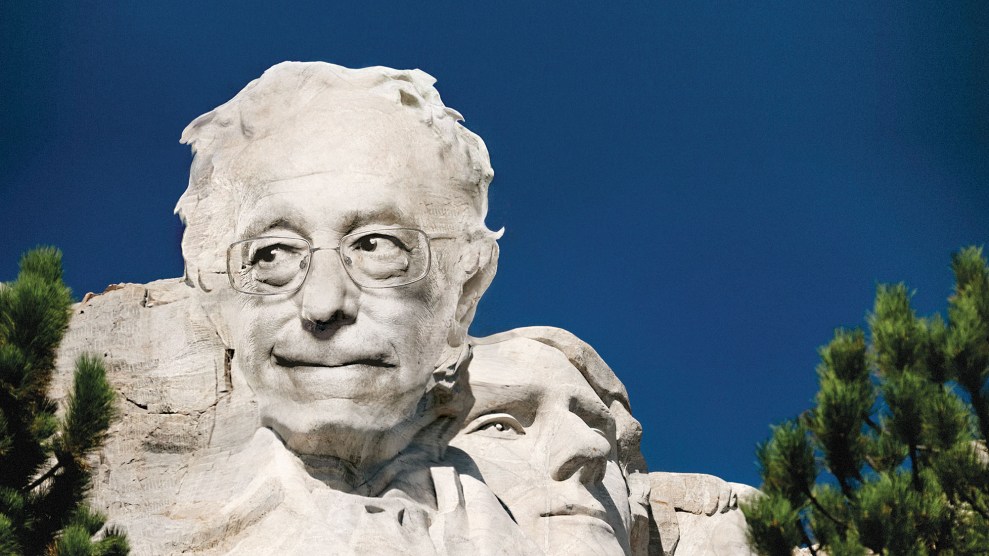
Andrew Harnik/AP
In the fall of 2005, the city of New York was preparing a mammoth lawsuit against 14 gun manufacturers and 27 distributors and dealers. The suit set out to prove that the gun industry bore a responsibility for the volume of guns illegally trafficked into the city.
To make its case, the city had marshaled significant evidence showing that gun manufacturers were unwilling to take simple steps to keep their guns out of criminals’ hands—and even knowingly fed the criminal gun market. The lawsuit highlighted federal data from 1996 to 1998 that had traced more than 34,000 guns used to perpetrate crimes back to just 137 dealers. The Bureau of Alcohol, Tobacco, and Firearms informed gun manufacturers every time a gun used in a crime was traced to their companies, information that would have made it easy for manufacturers to determine which of their distributors and dealers were supplying the black market, yet manufacturers continued to sell guns to those “bad apple” dealers.
As the trial neared, the city had marketing experts, dealers, and former gun industry officials ready to testify that the gun manufacturers’ lack of oversight of their dealers and distributors could only be attributed to a willful blindness that allowed them to profit off the criminal gun market. The city’s lawyers were prepared to argue that in Southern states with lax gun laws, manufacturers supplied dealers with more handguns than the legal market could consume, knowing the excess guns would be trafficked north up the I-95 corridor and sold illegally in cities like New York.
“New York was a very strong case,” says Jonathan Lowy, an attorney at the Brady Center to Prevent Gun Violence who worked on the case. “We were completely ready for trial.”
But the trial never came. In October 2005, Congress passed the Protection of Lawful Commerce in Arms Act (PLCAA), granting sweeping legal immunity to the gun industry. Gun manufacturers who lobbied for the bill warned that suits like New York’s were a scheme hatched by activist lawyers and judges to bankrupt the gun industry. The bill’s sponsor, Sen. Larry Craig (R-Idaho), named the New York case on the Senate floor as an example “of the predatory lawsuits” that the PLCAA aimed “to provide for the dismissal of.”
After the PLCAA passed, New York’s case was thrown out. The city never got its day in court.
More than a decade after its passage, the PLCAA is at the center of a fierce debate over gun control between Hillary Clinton and Bernie Sanders, the leading candidates for the Democratic presidential nomination. As a senator from New York in 2005, Clinton voted against the PLCAA; Sanders, then in the House of Representatives, voted for it, as he had done for an earlier iteration of the measure that failed in 2003. Recently, Clinton has accused Sanders of bowing to the National Rifle Association on this key piece of legislation. Sanders, who hails from a rural state with lax gun laws, has defended his vote as a way to protect the “small mom-and-pop gun shop” in Vermont from frivolous lawsuits.
But Sanders’ argument obfuscates the true impact of his vote—namely, that the lawsuits he helped derail once represented the most viable effort in decades to stem the flow of guns onto the black market.
Sanders’ current position on immunity is not entirely clear. In the latest Democratic presidential debate, he said he would take a second look at the bill. His campaign announced earlier this month that he would support proposed legislation to roll back immunity for gun manufacturers. (The campaign did not respond to a request for comment for this story.)
But Sanders has also recently defended the PLCAA by making the same arguments that the gun manufacturers made a decade ago. “If somebody has a gun and it falls into the hands of a murderer and that murderer kills somebody with the gun, do you hold the gun manufacturer responsible?” Sanders asked during the first Democratic debate in October. “Not any more than you would hold a hammer company responsible if somebody beats somebody over the head with a hammer. That is not what a lawsuit should be about.”
To Lowy, Sanders’ hammer analogy is misleading. “The idea he’s getting at is, if all you did is make or sell a product that’s used in a crime, you shouldn’t be liable,” says Lowy, who has litigated cases for the Brady Center for 18 years. “And he’s exactly right. But the lawsuits that I was involved in aren’t premised on that theory. Our theory is that the gun companies did something wrong: They didn’t use reasonable care.”
The New York suit was part of a legal experiment in the late 1990s and early 2000s to curb gun violence by holding manufacturers, distributors, and dealers liable for gun violence in cities across the country. Though many of these suits sought damages, the ultimate goal of the litigation was to force the industry to oversee its supply chain—to exercise “reasonable care” by taking steps that could preclude a foreseeable harm to others—and help cut off easy access to guns for straw purchasers and traffickers.
Beginning in the 1980s, victims of gun violence and their families started filing lawsuits against the stores that sold guns to their assailants, and later against the manufacturers as well. Then, in the late 1990s, cities and counties started to get involved. Throughout the decade, states had filed a deluge of lawsuits against the tobacco industry for deceptively marketing a deadly product, and some ultimately succeeded in winning historic settlements in the late 1990s. The tobacco litigation held a major industry accountable for the dangers of its products and forced producers to the bargaining table. Lawyers at the Brady Center wondered if guns could be the next tobacco.
On October 30, 1998, New Orleans became the first city to file suit against a gun manufacturer. A few weeks later, Chicago became the second. Philadelphia Mayor Ed Rendell, a Democrat who led a gun violence task force within the US Conference of Mayors at the time, urged other cities to follow their lead. Within a year, 30 cities and counties had filed suits against more than 40 gun manufacturers.
Some of the suits focused on manufactures’ failure to incorporate safety systems into their weapons. But others, like New York’s, argued that gun manufacturers facilitated the illegal gun market through lax oversight of their distributors. These suits were based on the legal principle of negligence, the idea that an individual or company is liable if it fails to exercise reasonable care. In many industries, manufacturers monitor their products from the factory to the distributors to the market. For example, due to the risk of food-borne illness, the food industry has developed its own set of food safety protocols, beyond what federal regulators require, to manage its downstream distributors. But the gun industry engages in remarkably little oversight. So the lawsuits sought to establish through the courts what gun control advocates couldn’t accomplish through state legislatures or in Washington: liability for gun manufacturers who don’t oversee their supply chain.
“What the gun industry chose to do was, at best, put their heads in the sand and ignore the reality that they were utilizing these bad-apple gun dealers,” says Lowy. “They knew that if they acted reasonably and put some reasonable oversight and conditions on the downstream sellers they would end up losing profits from the criminal gun market.”
The negligence argument against the gun industry was untested. “When you read the papers written by the lawyers for the gun companies, I mean, it was daunting,” recalls Allen Rostron, a lawyer who joined the Brady Center in 1999. “I thought, ‘Boy, we might lose every single one of these.'” Many cities’ suits were tossed out of court. But a few survived and began to inch toward trial.
With mixed results in the courthouse, press coverage of the lawsuits gave an immediate public-relations boost to gun control advocates. In 1998 and 1999, police officers around Chicago and Detroit embarked on undercover sting operations to purchase guns illegally. Again and again, dealers happily sold their guns to the undercover cops. In one Detroit-area sting in which one officer posed as an illegal buyer and another as a straw purchaser, the gun seller gave instructions to the undercover officer acting as the straw buyer: “When the manager comes over to check this, it’s your gun. You’re not purchasing it for him, it’s your gun…This is called a straw purchase. It’s highly illegal.” The sting was videotaped and later aired on NBC’s Dateline.
“Lawsuits frame issues often differently than the popular culture does,” says Timothy Lytton, a professor at Georgia State University College of Law. “Gun violence up until the 1980s was thought of as a problem of bad apples—criminals who were shooting people—and that it was a crime problem. The tort lawsuits basically reframed this and said, ‘No, the real problem here isn’t criminals. The real problem is industry practices, and…the real focus needs to be placed on the carelessness of industry distribution practices and the responsibility of the industry to police its own supply chain.'”
On St. Patrick’s Day in 2000, the lawsuits appeared to have paid off. Battling multiple suits, Smith & Wesson, the country’s largest handgun manufacturer, agreed to a historic settlement, promising to equip its guns with more safety features and institute a code of conduct for its dealers. President Bill Clinton praised the agreement.
“That really was the high point,” recalls Rostron, now a professor at the University of Missouri-Kansas City School of Law. “People were almost giddy.” The gun industry, for its part, saw the agreement as proof that the lawsuits were an abusive legal tactic that must be stopped. The lawsuits “could force the industry to the settlement table even though [the cities] had weak prospects of actually winning the case, just because of the sheer weight and burden of litigating,” explains Lytton, who edited a book of articles about the gun litigation called Suing the Gun Industry.
Gun control groups hoped other manufacturers would follow Smith & Wesson’s example. Instead, the NRA instigated a boycott against Smith & Wesson. Sales plummeted, Smith & Wesson’s CEO resigned, and the company was sold for a fraction of its former worth. Rather than a breakthrough, the agreement became a major setback.
More settlements were now out of the question. Meanwhile, the litigation was getting harder. Under pressure from the NRA, 32 state legislatures passed immunity bills, shutting down many of the lawsuits. Even the Detroit-area case, with the damning sting evidence that had aired on prime-time television, was ultimately thrown out. Then came the election of President George W. Bush later that year. Former Brady Center lawyers point to the election as the death knell for their litigation effort; now the threat of national immunity legislation would hang over every lawsuit.
New York’s lawsuit, initially filed under Mayor Rudy Giuliani, a Republican, was advocates’ best chance to strike a blow against the gun industry. The city had been lucky to land a judge who saw merit in the case and wanted it to proceed to trial, an event that would mean front-page headlines for the city’s allegations. But shortly before trial, the PLCAA ended the suit. “It was like Congress was waiting in the wings to see if we had any success and then cut [the cases] off if we did,” says Rostron. “It was a dismal era for gun control.”
After the PLCAA, the city suits came to an end. The Brady Center still litigates cases on behalf of victims, but those suits are an uphill climb under the bill’s broad provisions.
The spate of mass shootings in recent years has sparked a renewed effort to sue the gun industry. The parents of one victim of the shooting at a movie theater in Aurora, Colorado, tried to sue the online retailers for allegedly failing to assess the shooter’s mental fitness before selling him thousands of rounds of ammunition and body armor, but they lost. Following the December 2012 massacre at Sandy Hook Elementary School, the victims’ families filed a lawsuit against the makers of the Bushmaster rifle, arguing that the manufacturer is negligent in selling assault weapons used for war to the general public. This is a novel legal approach, and it’s unclear how it will fare in court. But sympathy for the victims, and for others in recent mass shootings, has brought new scrutiny to the PLCAA as the Bushmaster case moves forward. Still, the PLCAA could likely end this lawsuit—a fact the Clinton campaign has eagerly pointed out.
In 2013, the New York Times obtained confidential testimony from these city cases in which top executives scoffed at any sort of supply chain oversight. Asked if his company would investigate whether it was supplying shady dealers, one executive testified, “I don’t even know what a gun trafficker is.” And a top executive at Glock proudly stated that his company would continue to supply a dealer who had been charged with breaking gun laws. “This is America,” the executive said. “You’re still innocent until proven guilty.”














